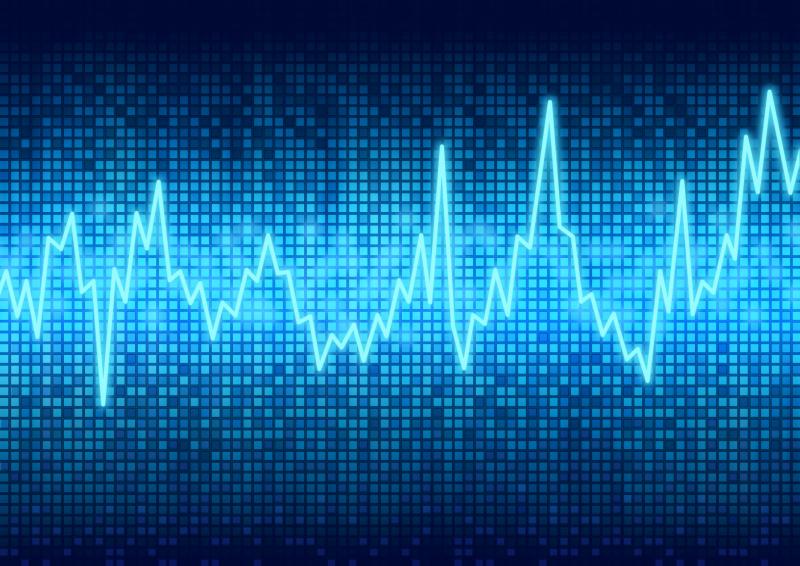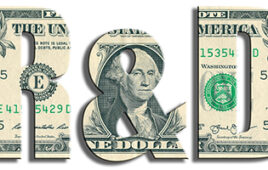
The R&D Market Watch Index for the week ending June 23, 2017 closed at 3,545.62 for the 25 companies in the Index. The Index was up 1.73% (or 60.21 basis points) over the week ending June 16, 2017. Nineteen Index companies gained value last week from 0.16% (Qualcomm) to 13.00% (Oracle). Six Index companies lost value last week from -0.15% (Roche Pharm) to -2.90% (Intel). Of these six, two were pharm/biotech, two were automotive and two were ICT. The pharm and automotive stocks lost less than 1% each while ICT’s lost up to 2.9% (Intel).
In general, most pharm and biotech stocks gained for the week, being led by several positive clinical testing results. Novartis, for example, gained nearly 7% based on positive phase III results from its CANTOS cardiovascular drug testing. Healthcare stocks also rose based on the Republican release of their plans on Thursday for replacing the Affordable Care Act. On the other side, energy and equipment stocks fell (their biggest decline since September) as the price of U.S.-traded crude oil dropped. Late in the week, France announced that it will ban new oil/gas licenses by the end of the year to reinforce their support for the production of renewable energy sources.
China analysts also point to the peaking of its economic growth over the past six months which puts pressure on China’s job market. China’s once every five-year Communist Party Congress meets this Fall to choose its next generation of leaders and these combined events are likely to result in changes in President Xi Jingping’s financial sector regulations over the next few months.
Our R&D Index listings have changed this week with some companies no longer being followed (Ford, Ericsson and Siemens) and other companies being added to the Index (Amazon, Alphabet/Google and Volkswagen AG). The additions are clearly large players in the overall R&D environment with combined investments of more than $40 billion in annual R&D. The deletions (and especially Ford and Ericsson) have struggled over the past several years with weak growth and declining market share and stock prices and their resulting weak or falling R&D investments.
We have also updated the historical references to stock trends for the R&D Index members, which are now more relevant to current events. As a result, the overall rankings, based on 2017 R&D investments, has changed significantly with Amazon now at the top of the list with its $17.7 billion in R&D. The total R&D investments for the R&D Index members has increased by about 20% and the combined stock valuations has more than doubled.
We value your opinions in these listings and invite you to send us your comments and suggestions for future modifications.
|
R&D Market Pulse Index Week Ending June 23, 2017
|
||||||||||||||||||||||||||||||||||||||||||||||||||||||||||||||||||||||||||||||||||||||||||||||||||||||||||||||||||||||||||||||||||||||||||||||||||||||||||||||||||||||||||||||||||||||||||||||||||||||||||||||||||||||||||||||||||||||||||||||||||||||||||||||
About the R&D Market Pulse Index
R&D Market Pulse Index is a weekly stock market summary of the top international companies involved in research and development. The top 25 industrial spenders of R&D in 2017 were selected based on the latest listings from Schonfeld & Associates’ June 2017 R&D Ratios & Budgets. These 25 companies include pharmaceutical (11 companies), automotive (5), ICT (8) and conglomerate (1) organizations who invested a cumulative total of more than $209 billion in R&D in 2017, or approximately 10% of all the R&D spent in the world by government, industries and academia combined, according to R&D Magazine’s 2017 Global R&D Funding Forecast. The stock prices used in the R&D Index are tabulated from NASDAQ, NYSE, XETRA and OTC common stock prices (in U.S. dollars) for the companies selected at the close of stock trading business on the Friday preceding the publication of the R&D Index in R&D Magazine’s R&D Daily eNewsletter.
The companies used in the R&D Index include Amazon, Alphabet/Google, Microsoft, Intel, Apple, Volkswagen AG, Roche Pharma, Toyota, Johnson & Johnson, Novartis, General Motors, Pfizer, Bristol-Myers Squibb, Cisco, Qualcomm, Oracle, Honda Motor Company, Astra Zeneca plc, Merck & Company, Daimler, Bayer AG, Sanofi SA, IBM, GlaxoSmithKline and Eli Lilly Co. Stock prices are based on those stocks traded on the U.S. exchanges. R&D Index trends (in the stock prices) are just one indicator of the amount of capital available to these high-technology companies to invest in R&D and should not be implied to indicate the absolute value of R&D investments made by these organizations. The companies chosen for the R&D Index have very large sophisticated internal and global R&D organizations with each company investing between $4.5 and $17 billion annually on their R&D efforts.

